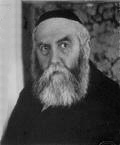12–13 Tammuz
| Yud Beis-Yud Gimmel Tammuz | |
|---|---|
 Rabbi Yosef Yitzchak Schneersohn | |
| Official name | Hebrew: י״ב-י״ג תמוז |
| Observed by | Chabad |
| Significance | Release of the sixth Rebbe of Chabad Hasidism, Rabbi Yosef Yitzchak Schneersohn from a Soviet imprisonment |
| Celebrations | Public gatherings are held |
| Observances | Tachanun is not recited |
| Date | 12–13 Tammuz |
| 2023 date | Sunset, 30 June – nightfall, 2 July |
| 2024 date | Sunset, 17 July – nightfall, 19 July |
| 2025 date | Sunset, 7 July – nightfall, 9 July |
| 2026 date | Sunset, 26 June – nightfall, 28 June |
| Frequency | annual |
Yud Beis–Yud Gimmel Tammuz, the 12th and 13th days of Tammuz on the Hebrew calendar, are celebrated as a holiday by the Chabad Hasidic community. The holiday commemorates the liberation of Rabbi Yosef Yitzchak Schneersohn, the sixth Chabad Rebbe, from Soviet imprisonment. Schneersohn was born June 21, 1880 (12 Tammuz 5640). The day is marked by public gatherings, additional study and prayer.[1]
History
On Wednesday, June 15, 1927 (Sivan 15, 5687)[2] Rabbi Yosef Yitzchak Schneersohn, the sixth Rebbe of the Chabad Hasidic movement, was arrested and incarcerated by the Soviet communist regime for "counter-revolutionary activities". The main allegations against Rabbi Yosef Yitzchak were that he continued to maintain a network of religious schools where Torah and Jewish religion were taught. Initially sentenced to death, Rabbi Yosef Yitzchak received a sentence of three years exile in the city of Kostroma.
On Tuesday, July 12, 1927 (Tammuz 12, 5687) the Rabbi Schneersohn was ordered to register as a prisoner at the Russian government offices in Kostrama. At that time, he was notified that the order had been received to grant him complete freedom. However, due to bureaucratic delays he was released the following day on Wednesday, July 13, 1927 (Tammuz 13, 5687).[1]
Celebrations
Each year on the Hebrew dates of Yud Beis and Yud Gimmel Tammuz, Chabad Hasidim celebrate Rabbi Schneersohn's release. The two-day celebration is called a "Chag HaGeulah" and public gatherings ("farbrengens") are held and the story is retold.[3]
References
- ^ a b Schneerson, Menachem M. "Yud-Beis Tammuz 5738." Archived April 29, 2014, at the Wayback Machine Sichos in English: 5738. Volume 1. Vaad Lehafotzas Sichos (Sichos in English). 1978. sichosinenglish.org. Accessed April 28, 2014.
- ^ Schneersohn, Yosef Yitzchak. Letter to Chabad community in Riga Archived April 29, 2014, at the Wayback Machine. Vaad Lehafotzas Sichos (Sichos in English). Accessed April 28, 2014.
- ^ Yud Gimmel Tammuz. shturem.org. Accessed April 28, 2014.
